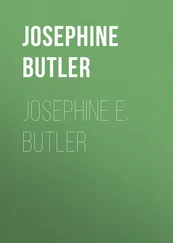In general, the way we sleep is definitive not only of the general biological function of our bulk of bodies, but also of our species in the context of physiological evolution. Humans have by far the most clearly defined monophasic sleep pattern; meaning that we sleep all in one period and operate awake all in one period, subject to variation. Our sleep sets us apart. Chimpanzees operate under a more biphasic structure, with nightly ten-hour periods punctuated with many minor awakenings, and a five-hour nap during the day. Non-primate behavior tends toward a polyphasic cycle, with some species regularly varying between sleeping and waking as many as twelve times in a twenty-four-hour period. Giraffes sleep less than most any other animal, between ten minutes and two hours a day. More anomalously, baby dolphins and killer whales often do not sleep for up to thirty days after becoming born. Elephants embody another schedule of duality in that they sleep standing up through their NREM periods, and then lie down when REM hits — as if the dreaming were both the real rest and the weight. Ducks are able to split their mind into fields of sleeping and work them in shifts — one half awake to preserve the body against predators, while the other half regenerates in rest.
It is theorized, then, out of all of this, that the shift from polyphasic to monophasic sleeping might have been an important difference between Neanderthals and modern humans. Interesting, too, in light of the fact that the disruption of the monophasic cycle, the locking out, often causes in its host body a return to baser physical behaviors — beyond simple glitches in motor skills, memory, and communication, sleep deprivation can cause frustration so intense it leads to psychotic and violent behavior, and its sufferers are more prone to becoming belligerent and exercise threats.167 More directly, it can cause conditions such as “tension headaches, gastrointestinal problems, nonspecific aches and pains, and allergies.”168 Problem-solving skills can degrade, too, resulting in primitive “cram the object into the shape” strategies, as if the echo-pattern of the sleeping exhibits a return to the prior, cave-cramped mind.
Felix Kersten, a confidant of Heinrich Himmler, writes of Adolf Hitler: “An incurable disease was destroying Hitler: his judgment was affected, his critical faculties were unbalanced. The headaches, the insomnia, the weakness of the muscles, the trembling of the hands, the fumbling with words, the convulsions, the paralysis of the limbs would increase relentlessly. The ecstatic illusions, the megalomania would have no check.” And so too, with Stalin: “He began to suffer from insomnia, and his shortened arm bothered him periodically”169—such sleeplessness in some way leaking up the veins of the tyrant’s murderous malformed appendage in the image of Twin Peaks ’s backwards-speaking dwarf, the Man from Another Place, who murmurs into a mirror, “I am the arm,” some kind of ruptured anatomy, an itching language, spilling forth in the way as would the fear, again, of the intruder, on and on — Stalin’s brain fraught, creeping in the holes of holes of too much waking, as Lenin’s did, as did those of Napoleon, Kafka, John Wayne Gacy, Van Gogh, Michael Jackson, leagues of the inevitable awake, their bodies tied together in their hyper-folding black-lodged knowledge of the carnal shape of night.
]
]
]
Of the millions today dealing with various strands of insomnia, it is estimated that fewer than half seek treatment. This figure is similar to that of those with disturbed mental health: “57 % reported a belief that poor sleep would resolve on its own and/or one should be able to manage insomnia independently, 38 % indicated that there was a lack of awareness of available treatment options, 31 % noted a perception of treatment as ineffective or unattractive, 17 % referred to a stigma surrounding insomnia, and 11 % endorsed personal constraints regarding treatment-seeking.”170 The major problem with sleep treatment, it seems, is that the problem for each person is so diffuse; what works for one causes for another only more frustration, deeper shrieking; there’s no guaranteed off button until you’re dead. This doesn’t stop at least some of us, in certain desperations, from trying most anything anybody might suggest.
“Just relax,” people who have never had extended sleep trouble themselves have said to me in more instances than I could name. “Stop thinking, lay there, and relax.” This is, of course, easier said than done for some people, and in truth the further encouragement of such an aimless, nothing-named instruction often causes only further clouding, making worm. The more one cannot do the thing so easily offered by someone else as an easy fix, the more confounded the condition itself becomes. The solution, then, is part of the problem — the key hidden somewhere in the context of that lock — the lengths to which one might go in search of some effective combination ranging from the common sense to the extreme.
Early attempts at sleep solutions begin with what some then considered magick, a cryptic manner of appeal. A popular British medical journal from 1880 notes the success of bloodletting in those held awake by some mounting pressure in the head: “Case III: Mr. H., aged 47, foreman in a corn-mill, stout, full habit, suffered for three years from headache and oppression of the brain. He had been treated without permanent benefit by several medical men; none had bled him. On August 10th, 1879, the patient came to me and complained of pain across the top of his head, like a boring between the skull and the brain; also fullness [ sic ] and oppression; also feeling to stagger when walking, like a person drunk; also sleeplessness. For five weeks I tried the effect of various drugs, with but little benefit. Leeches to the head gave a little relief. On September 18th, I bled the patient to sixteen ounces; and, before the operation was finished, the headache was cured, and the following night the patient slept better than he had for several months.”171 By 1909 the same journal praises the use of electricity on flesh: “High-frequency currents, when administered carefully by a qualified medical man, induce a sleep that is pleasant in character and has no evil consequences. Further, not only is sleep produced, but the patient derives general benefit from the influence of high-frequency currents. There is a feeling of well-being and of exhilaration produced, which is permanent in character.” On the same page as the shock-praise, the article disparages the use of drugs as a solution: “Their results are not permanent; and they are frequently a source of danger to the moral of the patient. Further, while they promote sleep, they usually occasion unpleasant sensations on the day following the administration of the drug.”172
Other sources in this era expound on the home-based use of experimental chemicals and herbs, and in the same breath acknowledge the nature of the substances as “likely to do as much injury in the one case as in the other. He would be working on his own body, and hence much more to his disadvantage than if he were endeavoring to compute the orbits of comets or the periods of the rotation of the moons of Jupiter.”173 Herein the author, an ex—“medical officer of the army,” deferentially conjectures174 upon the benefits of, among others, sulphonal (“In proper doses, it produces sound and refreshing sleep, but it requires from two to four hours to act… intense cardiac weakness, stupor, and even convulsions have been induced by its use”), chloralamid (“As soon as the people get hold of it we shall surely have an experience of its effects very different from that which we now possess”), and chloral (“The sleep produced by choral is natural in almost every respect… a large quantity acts as a poison to the heart, paralyzing this organ and therefore causing death”). Here again, the door to death, in parallel halls: side by side in absent light — which, for some, in jest or measure, might become, in worse lights, a cure itself. In his introduction to an episode of Alfred Hitchcock Presents in 1956, Hitchcock announces he’s just “come into possession” of a cure. “It comes in capsule form,” he says, arranging a row of five bullets nose-up on his desk. “For best results, they must be taken internally.” Studies linking sleeplessness to self-murder in this way have found those too long awake as much as 2.6 times more likely to turn to forever wanting out.175
Читать дальше












